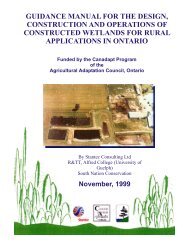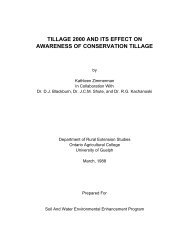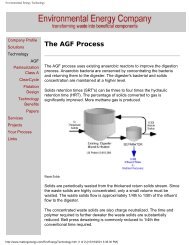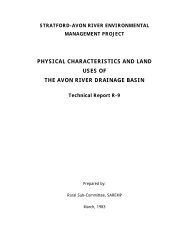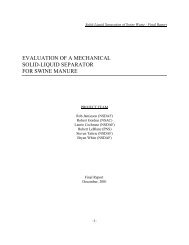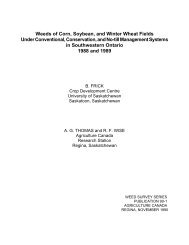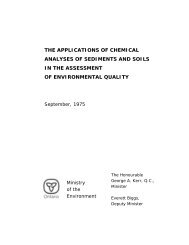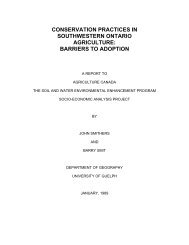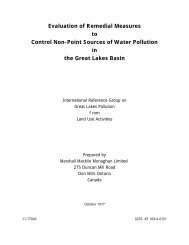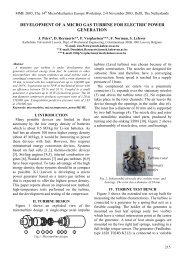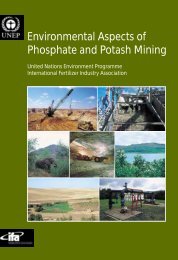demonstration of biogas production using low moisture content
demonstration of biogas production using low moisture content
demonstration of biogas production using low moisture content
Create successful ePaper yourself
Turn your PDF publications into a flip-book with our unique Google optimized e-Paper software.
LITERATURE REVIEW<br />
DEMONSTRATION OF BIOGAS PRODUCTION USING<br />
LOW MOISTURE CONTENT BEEF CATTLE MANURE<br />
LITERATURE REVIEW<br />
The development <strong>of</strong> alternative energy and fuel sources began well before 1970, but the interest in producing<br />
<strong>biogas</strong> from manures peaked during that time because <strong>of</strong> rising prices in the fossil fuel market. Due to high cost,<br />
high maintenance, and design problems, interest in <strong>biogas</strong> <strong>production</strong> at beef cattle feedyards declined. Recent<br />
interest has surfaced in areas that deal with more than just the conservation <strong>of</strong> fossil fuels. These areas include<br />
controlling odors and groundwater contamination.<br />
Biogas is composed almost exclusively <strong>of</strong> methane and carbon dioxide with traces <strong>of</strong> H2 S, N 2 , H 2 and CO. The<br />
energy value <strong>of</strong> <strong>biogas</strong> is typically 400-700 BTU/ft 3 as compared to 1,000 BTU/ft 3 for natural gas. The<br />
breakdown <strong>of</strong> cattle manure in <strong>biogas</strong> is accomplished by three types <strong>of</strong> bacteria, 1) hydrolytic, 2) transitional,<br />
and 3) methanogenic. Hydrolytic bacteria are utilized in the first steps <strong>of</strong> <strong>production</strong> by reducing large<br />
macromolecules (proteins, fats, carbohydrates) into much smaller molecules such as amino acids, sugars,<br />
acids, and alcohols. Transitional bacteria further reduce these molecules into acetic acid, H 2 and CO 2 . The final<br />
step <strong>of</strong> breakdown is accomplished by methanogenic bacteria, which reduce the molecules into methane (CH 4 )<br />
and carbon dioxide (CO 2 ) (Engler et al., 1995). Hansen et al. (1998) states that acetate-utilizing methanogens<br />
are responsible for 70% <strong>of</strong> methane produced in a <strong>biogas</strong> reactor. Biogas <strong>production</strong> is also a temperaturedependent<br />
process (Misra et al., 1992). The process takes place in either psychrophilic (



